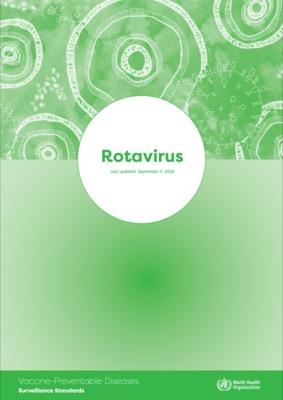Rotavirus: Vaccine Preventable Diseases Surveillance Standards

Overview
Rotavirus, a member of the reovirus family, causes watery diarrhoea, vomiting and severe dehydration in young children. Rotavirus is common, accounting for 35–60% of acute severe diarrhoea in children < 5 years of age in countries without rotavirus vaccine, with the highest attributable percentage in infants. Rotavirus diarrhoea is ubiquitous and, unlike bacterial diarrhoea, is not more prevalent in settings with poor water, sanitation and hygiene. Rotavirus has a case-fatality rate (CFR) of approximately 2.5% among children in developing countries who present to health facilities.
This CFR is higher in areas without good access to health care. In 2013, rotavirus caused an estimated 215 000 deaths worldwide. Rotavirus is highly communicable; it is shed in the stool at high concentration, and transmission is through faecal-oral route, either person-to-person or through fomites in the environment. The incubation period is one to three days. There is a spectrum of clinical disease with the typical presentation being acute, watery, non-bloody diarrhoea often accompanied by vomiting and fever. Rotavirus peaks in cool, dry seasons in temperate climates but exhibits less pronounced seasonality in tropical settings.
